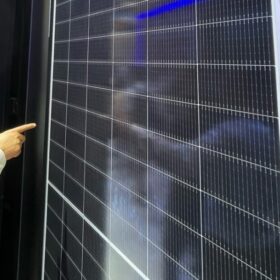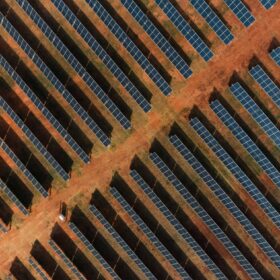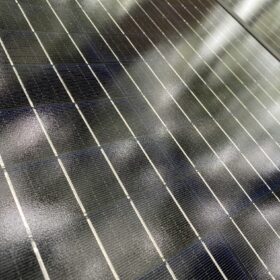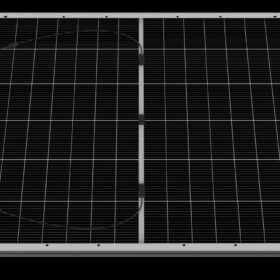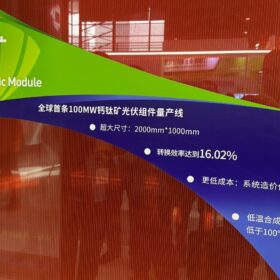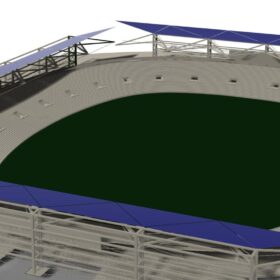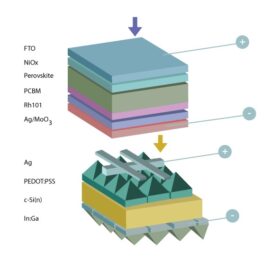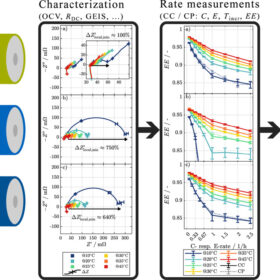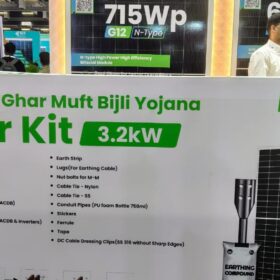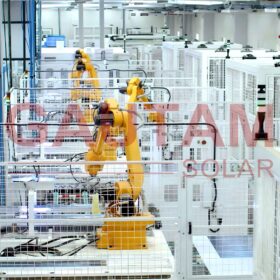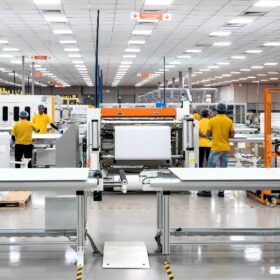Longi achieves 34.85% efficiency for two-terminal tandem perovskite solar cell
The result was confirmed by the U.S. Department of Energy’s National Renewable Energy Laboratory (NREL).
Global solar module shipments hit 703 GW in 2024
The new edition of the International Technology Roadmap for Photovoltaic (ITRPV), published this week, reports that average PV module prices last year dropped by 33% compared to the end of 2023.
International PV module pricing may rise to $0.11/W by year end
International PV module prices, driven by Chinese averages, will likely rise from $0.08/W to $0.10/W today to $0.11/W by the end of 2025 and potentially $0.13/W by 2027, says Clean Energy Associates (CEA), noting that heterojunction and back-contact technologies now make up 12% of global module capacity.
Canadian Solar unveils 630 W anti-hail TOPCon PV panel
The Chinese manufacturer said its new bifacial module features a thicker 35 mm frame and 2.5 mm fully tempered glass on both sides. It has a power conversion efficiency of 23.3% and a temperature coefficient of -0.29%/C.
GCL claims 19.04% efficiency for perovskite solar panel
The Chinese manufacturer was able to increase the panel efficiency from 18.04% to 19.04% in 16 months. The panel has a size of 2,005 mm x 1,005 mm x 35 mm and a weight of 34.5 kg.
Sun-tracking photovoltaics for stadiums
Researchers in Italy have developed a sun-tracking PV system design for stadium covers. The proposed approach is said to offer both strong structural response and high energy yield compared to systems based on fixed structures.
Indian scientists build 4T perovskite-silicon tandem cell based on hybrid heterojunction PV device
A research group in India has embedded a hybrid heterojunction solar cell as a bottom device in a four-terminal perovskite-silicon solar cell using a solution processing technique. The novel cell architecture, according to its creators, could be produced at significantly lower costs compared to conventional perovskite-silicon tandem designs.
‘Solar module prices will soon go back to over $0.12/W’
The global solar module industry is expected to regain a sustainable balance in the next six months, Yana Hryshko, head of Solar Supply Chain Research for Wood Mackenzie, told pv magazine. She explains why solar module prices may increase soon, suggesting that Tier 1 modules prices could reach $0.14-$0.15/W by the end of this year, and discusses how consolidation is materializing within the global PV industry.
First Solar sues JinkoSolar for alleged TOPCon patent infringement
First Solar sues JinkoSolar for alleged TOPCon patent infringement
First Solar has sued JinkoSolar in a US federal court in Delaware, claiming that the Chinese manufacturer infringed upon US Patent No. 9,130,074, which is related to tunnel oxide passivated contact (TOPCon) solar technology.
Sodium-ion vs. lithium-iron-phosphate batteries
Researchers in Germany have compared the electrical behaviour of sodium-ion batteries with that of lithium-iron-phosphate batteries under varying temperatures and state-of-charges. Their work shows how state-of-charge during cycling significantly affects the efficiency of sodium-ion devices.

